China Mounds, Deep Wells,
and other Two-hole China Buttons


China Mounds
and a raised mound in the center.
Mounds can be all one color or the rim color
can be different from the mounded center.
My favorite mounds have a luster finish
to the center surrounded by a colored rim.
To view an entire card of china mounds click
here
and then return using your back button.

Deep Wells
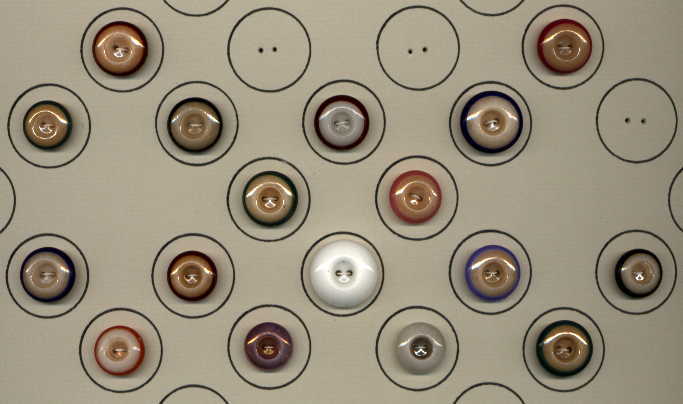
Deep wells are also two-hole buttons
and many are similar to the china mounds.
The deep wells, though, have a deep, circular
well-like indentation in the center of the button
that served to protect the sewing thread from wear.
The sides of the well are straight
and extend almost halfway through the button.
These are found in many of the same colors
and color combinations as the china mounds.

Two and Three-Banded Ringers

These ringers are characterized by their raised bands.
They are also classified as hollow-eyes
because of the circular hollow sewing well.

Tire Shapes

This is another type of hollow-eye and is easily distinguished
by the tubular rim at the edge of the button.

Radiating-Line Rims
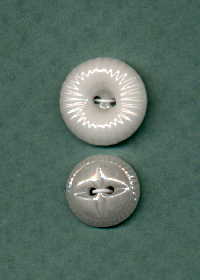
These two-hole buttons have molded ridges
and grooves radiating from the center out to the rim.

Spokes and Circles
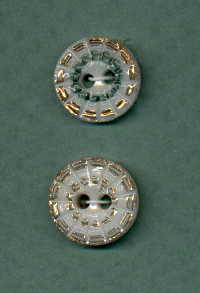
These buttons are known as Czechoslovakian flat tops
and they have a distinctive spoke and circle pattern.

Fisheye Chinas
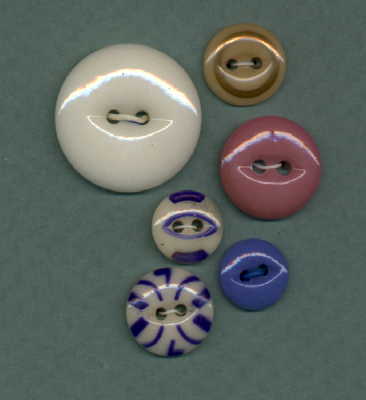
The term "fisheye" refers to the depression around the two sewing holes.
The "fisheye" is an elongated depression that is pointed at the two ends.
Many of the stencil buttons belong to this class of china button.

Panty-Waist

The panty-waist china button has a plain top and no sewing well.
It is easy to distinguish from the other types of china buttons
by the overly large holes.
It was used on children's undergarments,
and a loop of narrow tape had to fit through the holes.
One of the examples shown has been hand-painted with roses,
but that was probably a modern addition to an old button.

Pattern-Eyes
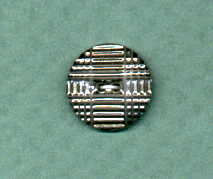
The pattern-eye is a two hole button with a molded pattern
that incorporates the holes into the design.
The result is a lovely textured button.

